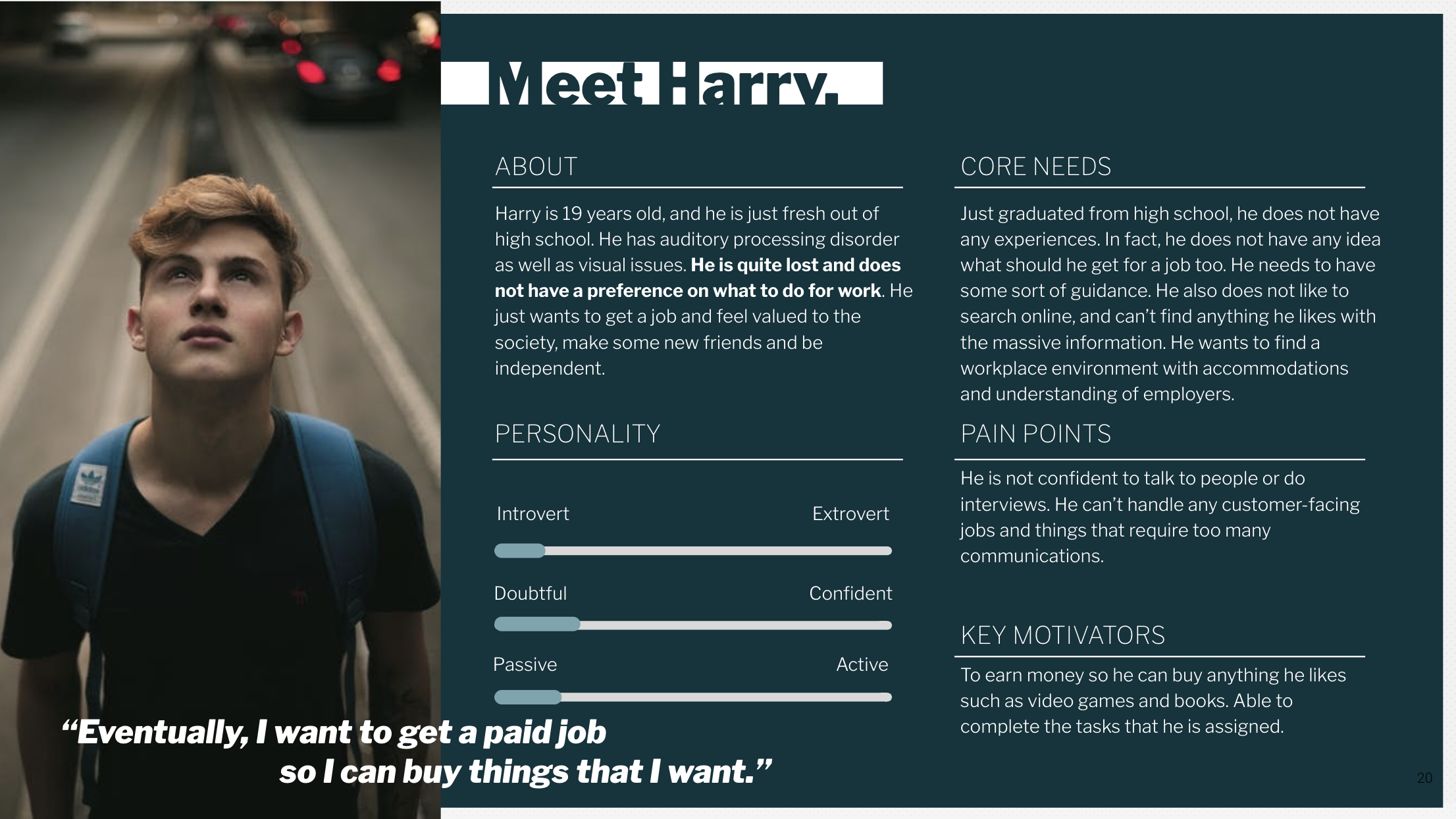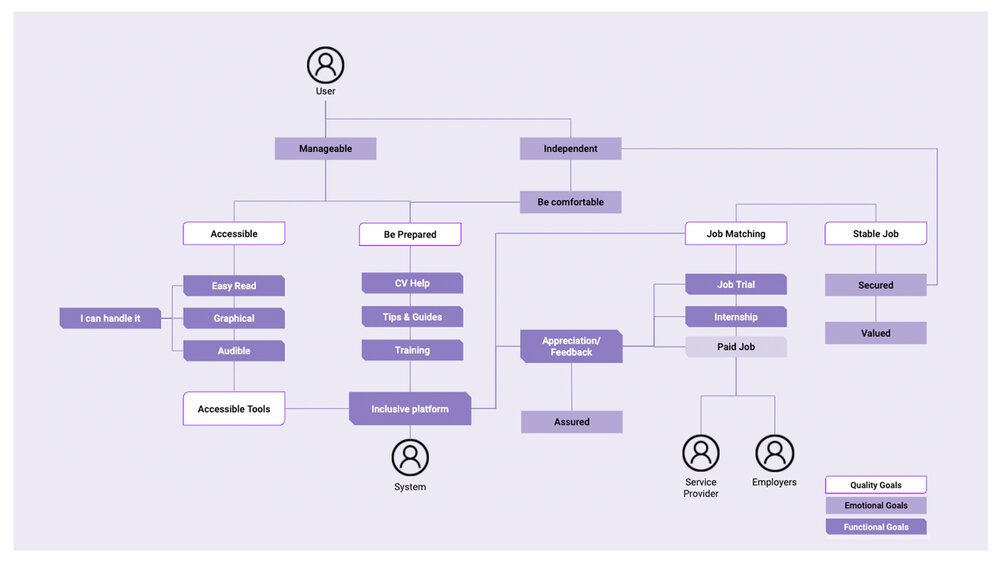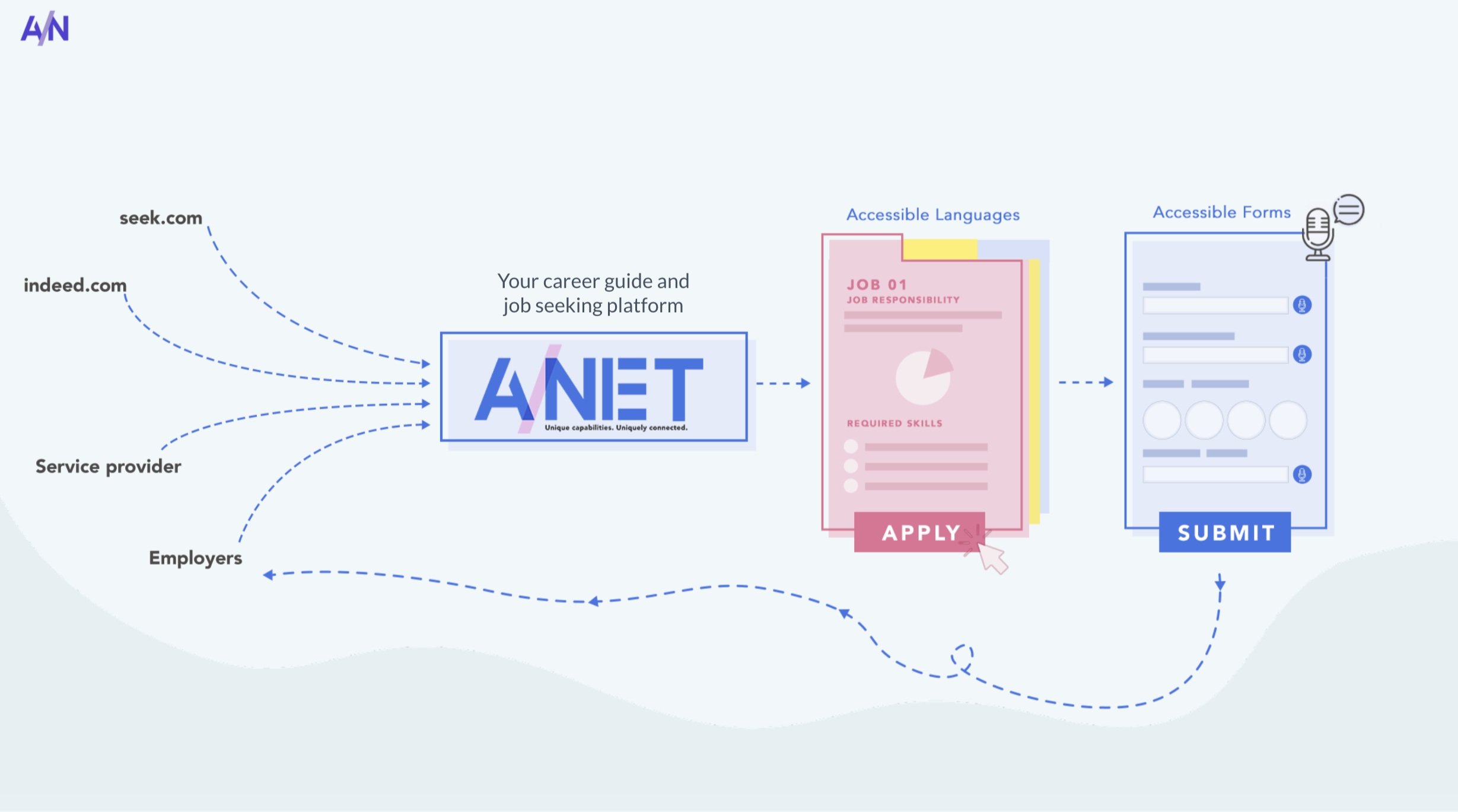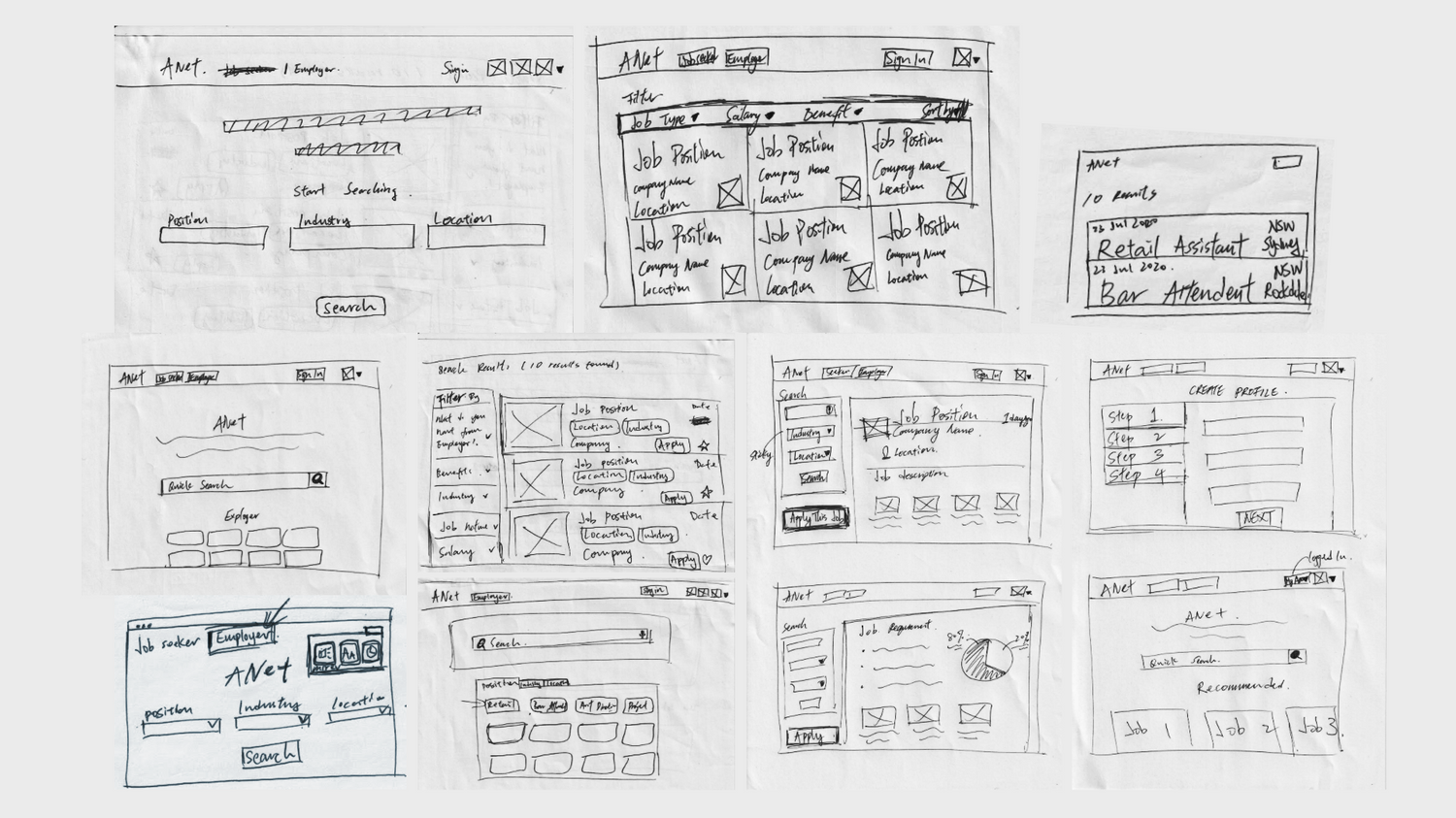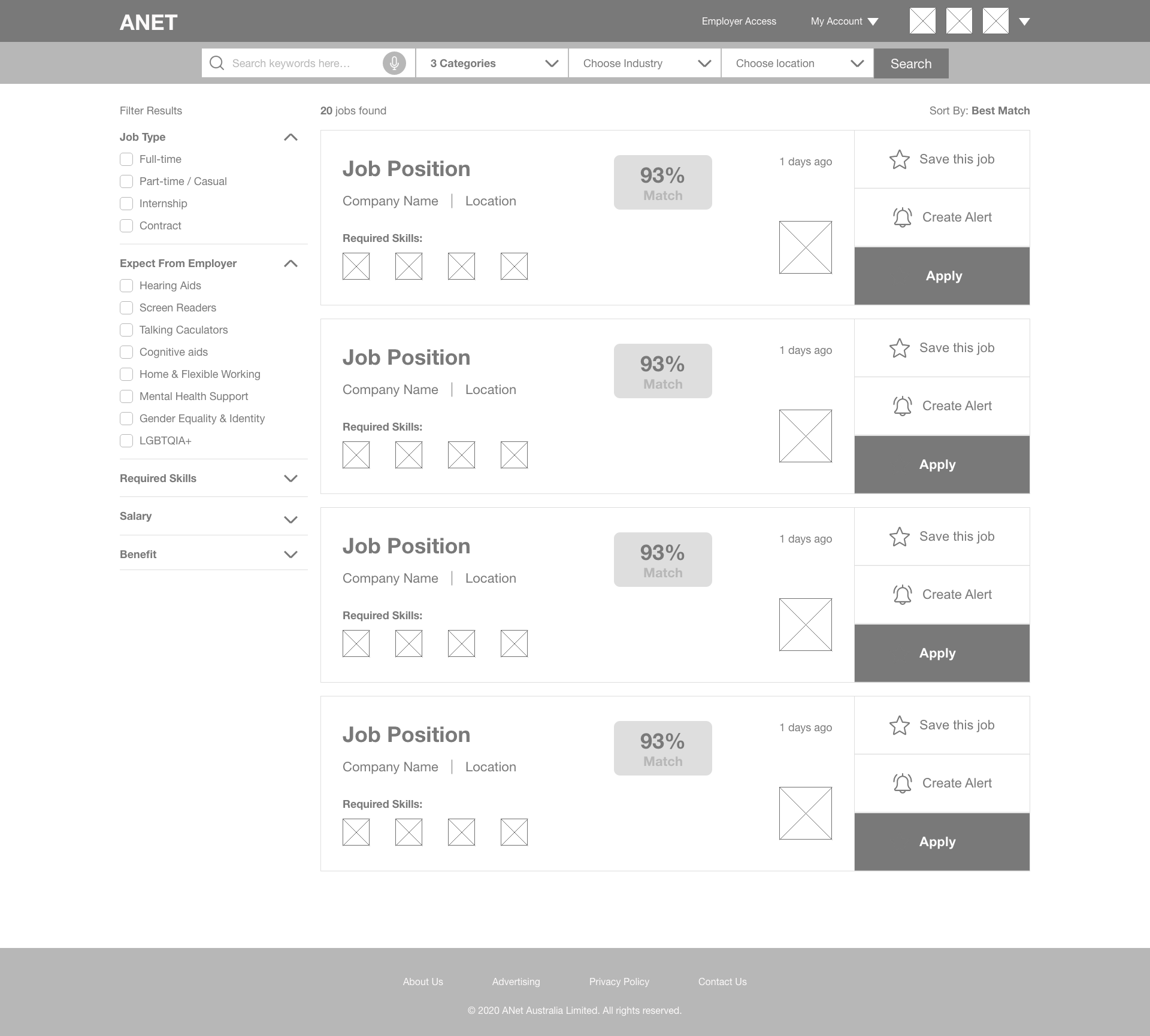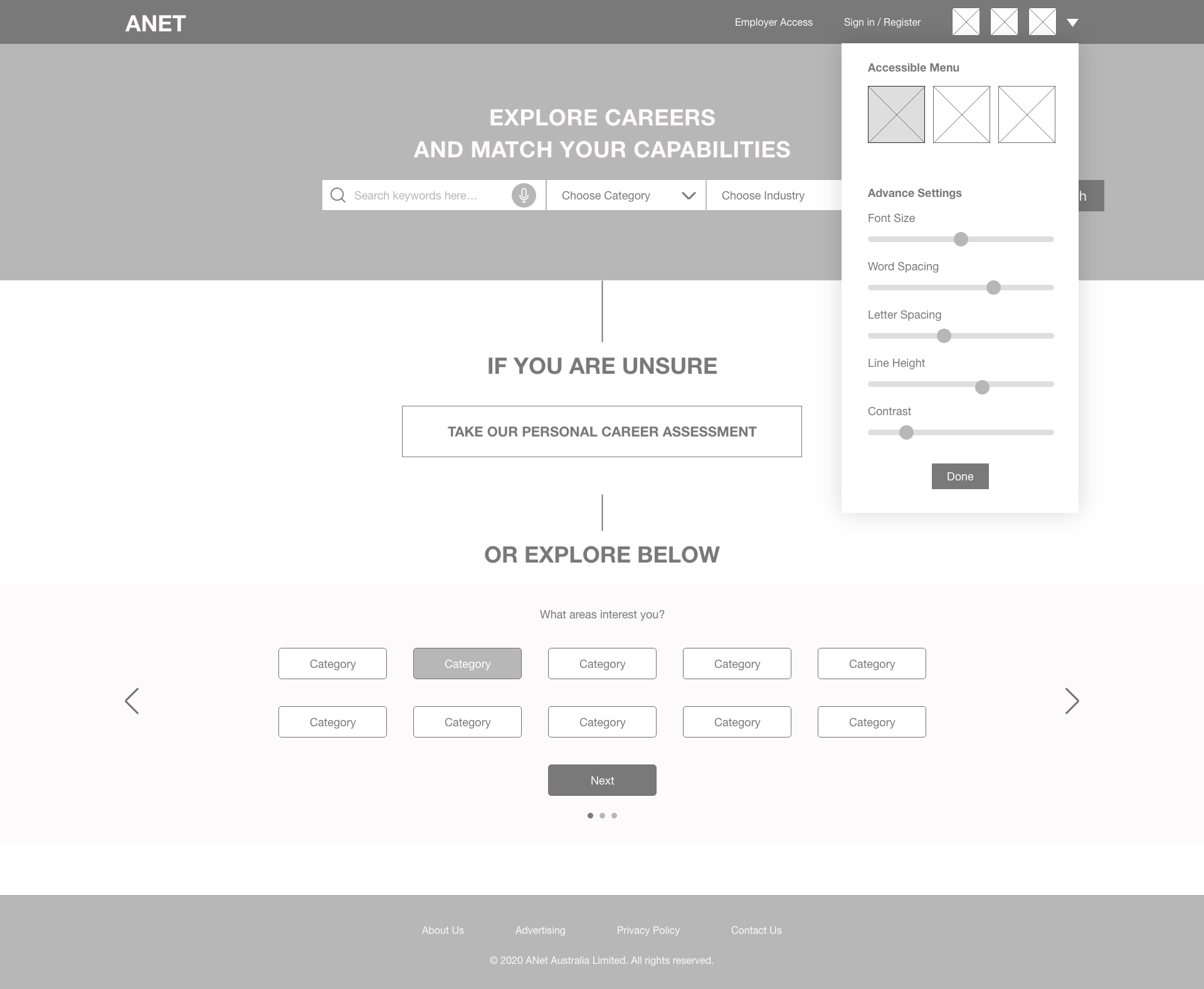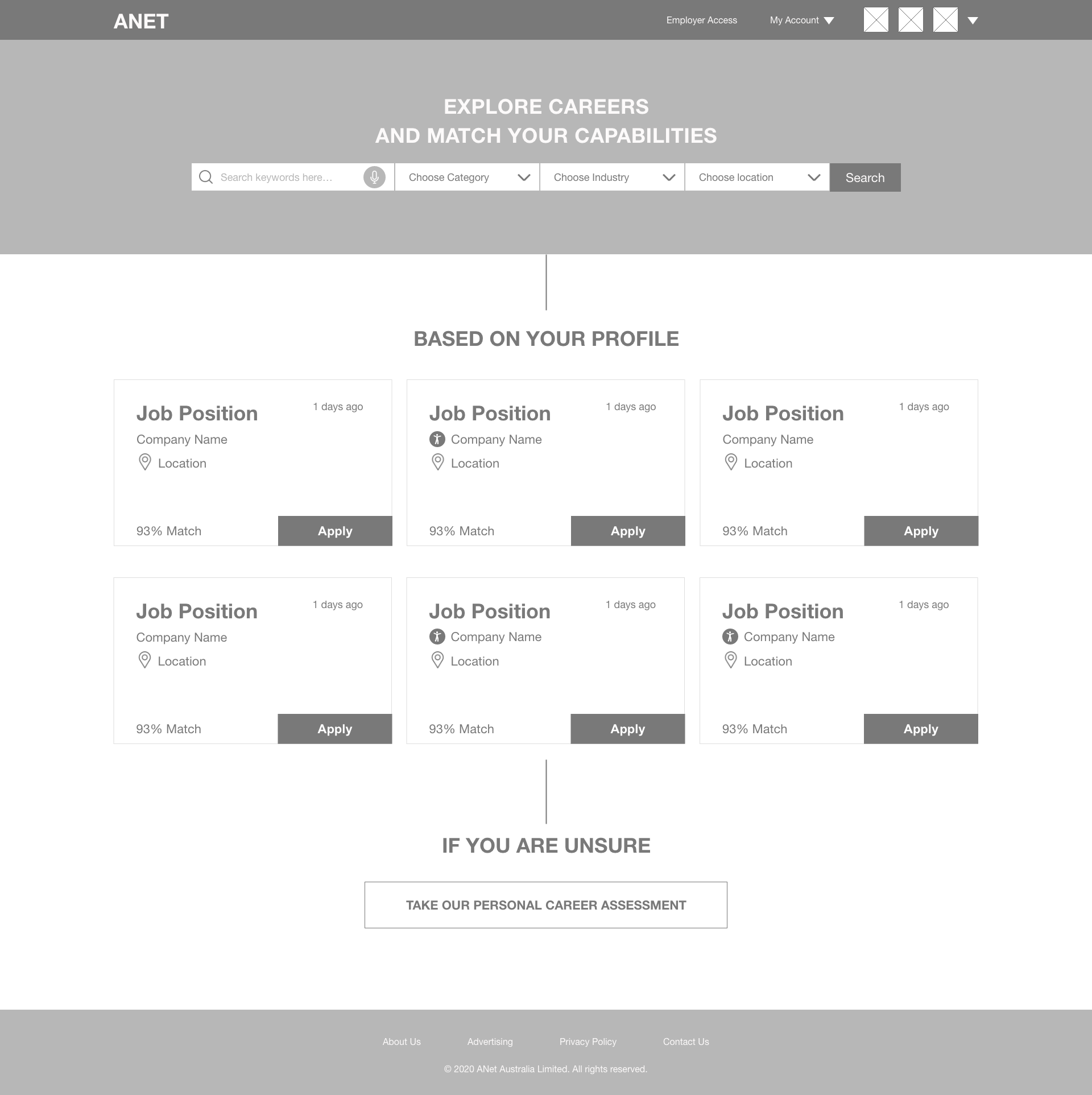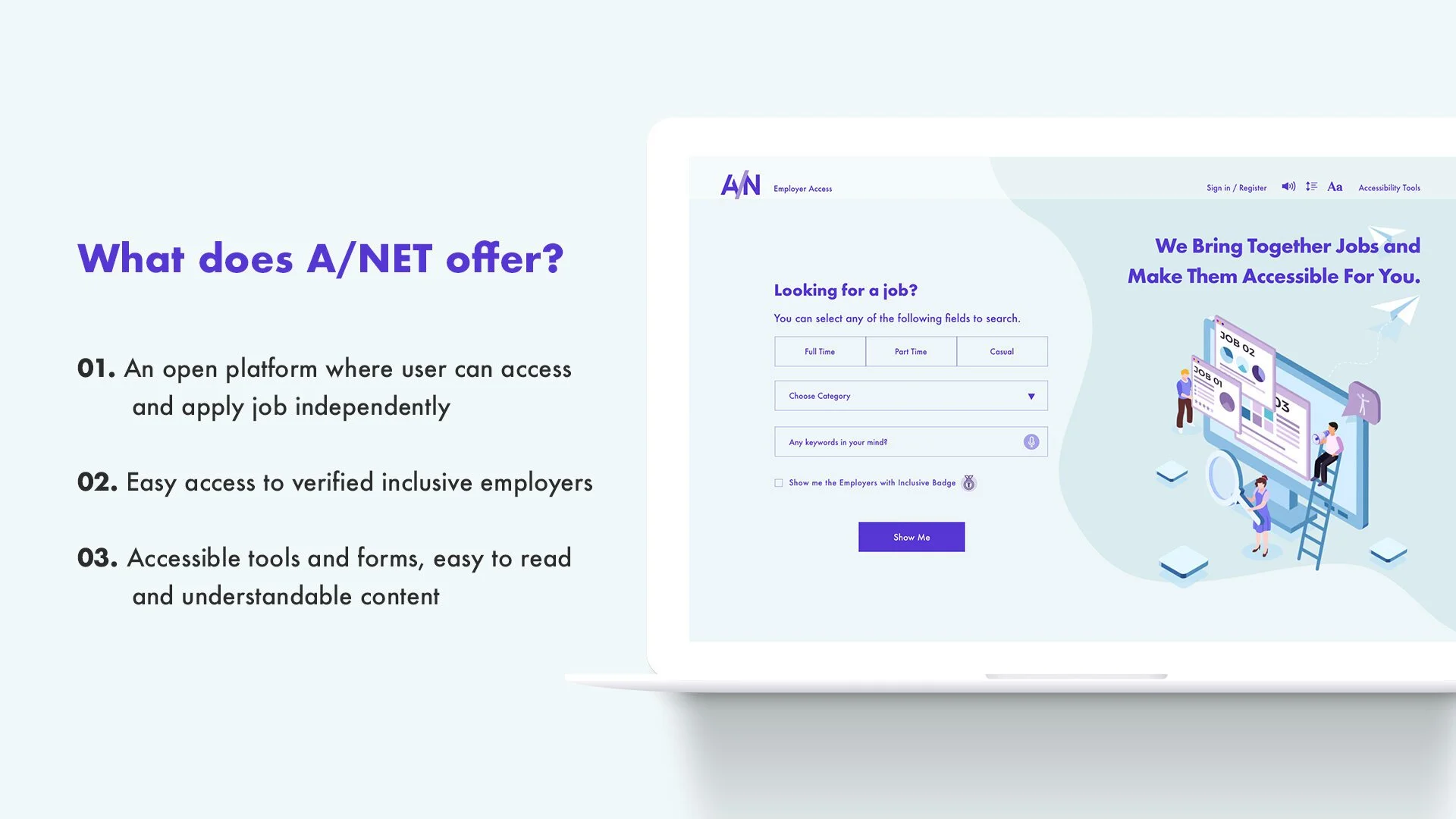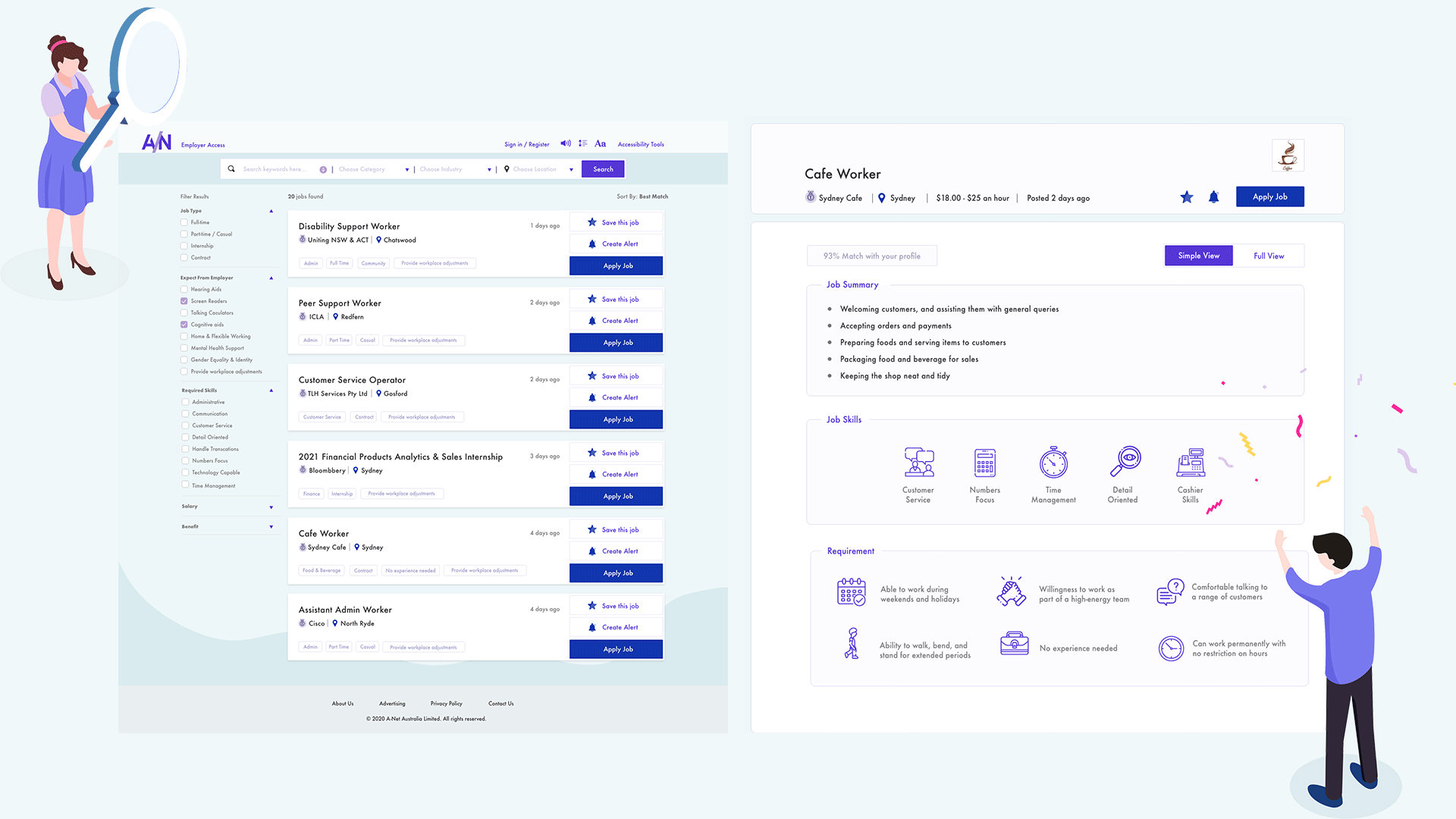
ANet
Make jobs accessible for disabilities.
Overview
A startup project designed for people with learning disability. ANet is an accessible and inclusive job portal which provide a platform for them to connect with potential job opportunities and inclusive employers.
Background
In Australia, about 3% of people have a learning disability. Learning disabilities change the way people communicate, retain information, and undertake work or leisure activities. What can we design to assist young adults with a learning disability to be work-ready?
The Problem
People with learning disability are less likely to get a job when the job searching process become difficult and unaccessible.
Only
46%
of working-age adults with learning disabilities are employed
There are
8 In 10
unemployed young adults are potential worker.
Mild disabilities has
2x
higher unemployment rate than server/profound disabilities in
15 - 24 years old.
Discovery
Interviews and online ethnography has deduced that it could be very “tiring, stressful to get the right support” when seeking for a job. It is also very difficult if they were to fill in long application forms, or have interviews without giving them enough time to process. The lack of support in the job seeking process may have also played a part in the difficulty to attain employment. When young adults are leaving school and are transitioning to the workforce, they have to take the knowledge, from a setting or social environment to apply it a different discipline and context in the workplace setting.
“I FEEL THAT PEOPLE WITH A LEARNING DISABILITY, WITH THE RIGHT SUPPORT, CAN ACHIEVE GREAT THINGS.”
- Quoted from a user interview
We’ve interviewed a group of potential users and developed 3 personas to uncover the pain points they experienced with the job searching process.
During the course of the research, other than looking into literatures, interviews and online ethnography research have also been conducted to gather user insights for better understanding of their needs and goals.
#1
They want to be financially independent and feel valued in the society.
#2
They lack appropriate support.
#3
The job does not match with their skills and capabilities.
From the online community, there were lots of people reflecting that they have faced difficulties when looking for open employment. They generally were frustrated about not having accessible support during the process, and the employers’ misunderstanding about their learning disability.
In addition, they usually do not reach out to service providers if they think their disability status is just mild or moderate, as these organizations normally have limited resources and they tend to primarily focus on disability of more severe and profound. People with a mild learning disability might think these people will need the service more than they do.
Designing Solutions
We have initially come up with a few design concepts that could work together as a whole in the ideation stage, and always come back to validate the concept with the objectives and user journey. We have then later refined our MVP design solution to a job search portal based on feedback.
We understand from our research that our design has to be:
Inclusive - To support young adults with a learning disability with different needs.
Accessible - To provide easy and accessible language and tools to assist job seeking and application process
Efficient - To offer an integrated platform to guide young adults to jumpstart their careers.
Ideate
Mindmap
User Journey
From there, we have decided what actions and features would be crucial and beneficial for our target audience and designed a user flow chart for our product around these conclusions. Ultimately, our aim is to provide alternative assistance to people with a learning disability when it comes to job seeking.
User Goal Framework
Workflow
After gathering our research findings and insights, we introduce an inclusive & accessible career network platform for people with learning disabilities - we aim to be able to match their unique capabilities with suitable jobs, with accessible, easily, and understandable layout with just one click away to apply their jobs.
Our platform is able to gather job listings from third party websites, and then convert it to accessible languages, preferably for people with different needs. The platform also allow users to take personal career assessment in a simple manner, or to click through a guided search to explore their own career path.
We understand a lot of people with learning disabilities find it stressful to fill in long and non-accessible job applications, let alone finding the suitable job that matches their skills. So apart from the accessible forms in the platform, it can also generate a profile that can be transformed into a PDF format for user to send it out to any potential employers.
But ideally, we would like to have it integrated with the employer’s human resource system so no more form filling will be done repeatedly.
Prototying
The process of user flow charts, sketching, and wireframing has led the team to explore diverse approaches to the problem: from allowing young adults to explore their career paths to assisting them during the job-seeking and application process.
Early iterations have also helped us to find many obscure problems: the accessibility and the legibility of the content as well as the easing of the job-seeking and application process.
Sketches
Wireframes
User Testing
For user testing, we’ve pre-defined the tasks as follow:
Search a job with a specific industry.
Add filters to job searching (e.g.skills)
Apply for a job (login / create a profile)
Create alert for specific job openings
Feedback
After conducting the user testing with the low-fidelity prototype, there were few comments that need to take consideration into the final design.
The main problem is homepage, since the original concept was to help young adults in the employment application process, we tried to cater different needs from different personas. However, one of the feedback was to minimise the initial product at this stage, and the main focus should be the job search and application function. The team tried to keep the career assessment section as this could be helpful to youngsters who just got out of school. After a few iterations of homepage, the team eventually agreed to remove the exploratory Q&A section and add latest job openings upfront.
Prototype Demo
Key takeaway
After our initial background research and competitor analysis, various iteration processes and user evaluations have uncovered numerous gaps and opportunities for us to improve our design solution. During sketching and wire-framing, we have explored diverse approaches to the problem: from simple user interfaces to detailed contents of the information and data that the users would like to include.
However, several constraints were applied for the purpose of limiting the minimum viable product (MVP) scope: the accessible job search portal. The persona-based walkthrough has also helped the team to find obscure problems - the ability to achieve certain tasks and interactivity of the device from another perspective. When we stepped out of own shoes as the potential users, we will not get stuck in our own designer’s conceptual model. This process was the most useful for us to identify enhancement of the product.
In fact, conversations and observations from user evaluations have also enlightened us with valuable insights and flaws that we have not recognised as designers.
What’s Next
We believe that this design solution could be tested more extensively with different user groups. This will definitely help to drive further the development of our product towards viability.



